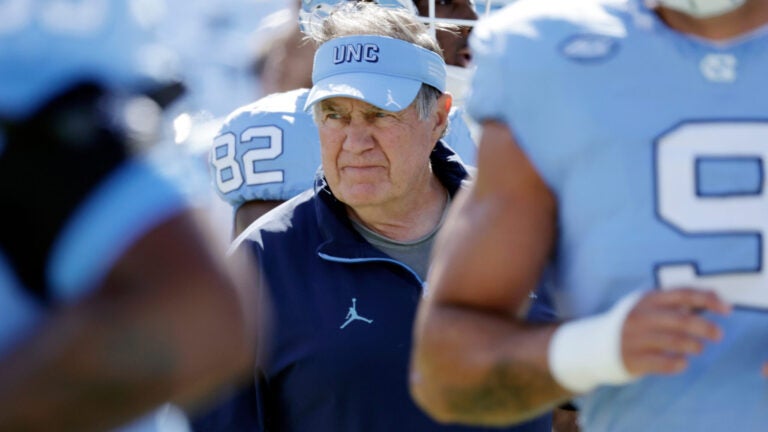Dan Lanning Reflects on Oregon's Loss to Indiana: Penalties, Adjustments, and Road Ahead

Dan Lanning Reflects on Oregon's Loss to Indiana
Following Oregon’s first loss of the season, head coach Dan Lanning addressed the media with a candid assessment. He acknowledged that Indiana made better second-half adjustments, which ultimately decided the game. Lanning noted Oregon’s struggles with penalties and negative plays that hindered momentum, emphasizing the need for improved in-game adjustments to counter well-coached opponents like Indiana.
Key Factors Behind the Defeat
The Ducks’ offense failed to find rhythm in the second half, while their defense could not contain Indiana’s quarterback Fernando Mendoza. Oregon’s cornerbacks’ aggressive play backfired, leading to costly penalties and missed opportunities. Despite a strong start and an interception return touchdown, the Ducks were unable to maintain control, with Indiana capitalizing on critical moments late in the game.
The Road Ahead
Lanning described the loss as disappointing but took full responsibility, giving credit to Indiana’s preparation and execution. He highlighted the importance of reviewing fundamentals and making adjustments as Oregon aims to refine its approach for the rest of the season.
About the People Mentioned
Fernando Mendoza
Fernando Mendoza is a rising star in American college football, currently playing as a quarterback for the Indiana Hoosiers. Born on October 1, 2003, in Miami, Florida, Mendoza is of Cuban descent and attended Christopher Columbus High School, where he developed his football skills. Initially, he committed to Yale University but later decided to join the University of California, Berkeley, to play for the California Golden Bears[1][3]. During his time at Cal, Mendoza gradually rose through the ranks, becoming a starter in the latter part of the 2023 season. He earned recognition for his performances, including a notable start against Oregon State where he completed 21 of 32 passes for 207 yards and two touchdowns[1]. After spending three seasons with the Golden Bears, Mendoza transferred to Indiana, attracted by the program's player development and coaching staff, including his younger brother Alberto, who is also part of the team[3][4]. Mendoza's career has been marked by significant growth, transforming from a two-star recruit to a Heisman contender. His impressive performances have not only highlighted his potential but also placed him as a potential top pick in the 2026 NFL draft[2][4]. As of the 2025 season, Mendoza has been exceptional, leading the nation in several quarterback statistics, including 14 passing touchdowns with no interceptions, and a high completion percentage[4]. His leadership and talent have made him a key figure in college football, with many considering him a bright future prospect in the sport.
About the Organizations Mentioned
Indiana
## Overview of Indiana as an Innovation Hub Indiana—specifically referring to its thriving technology and innovation ecosystem rather than a single organization—has emerged as a dynamic center for business and technology in the American Midwest. The state, and particularly its capital Indianapolis, is home to a diverse array of startups, established tech firms, and collaborative initiatives that collectively position Indiana as a leading innovation capital[1][8]. ## What Indiana Does Indiana’s innovation ecosystem is characterized by its focus on cutting-edge technologies across multiple sectors: artificial intelligence (AI), life sciences, cloud computing, environmental tech, digital health, and more[1][4]. Companies such as Scale Computing (edge computing), Eli Lilly (biotech), Bohu Digital (AI-powered marketing analytics), and ClusterTruck (logistics software) exemplify the state’s breadth of technological advancement[1]. Indianapolis, in particular, hosts notable firms like 120Water (water management SaaS), 3Aware (medical device surveillance), and Bloomerang (nonprofit software), reflecting both sector diversity and depth[2]. ## History and Growth Indiana’s rise as a tech hub is the result of strategic partnerships between universities, government, and the private sector, fostering a collaborative environment that attracts talent and investment[1][8]. Over the past decade, the state has seen a surge in startup activity, supported by organizations like Elevate Ventures and TechPoint, which provide funding, mentorship, and networking opportunities[1][7]. The ecosystem has matured through consistent venture capital activity, though recent years have seen more cautious investment trends mirroring national patterns[4][7]. ## Key Achievements - **Sector Leadership:** Indiana is recognized for breakthroughs in life sciences, AI, and environmental technology, with companies like Eli Lilly and BiomEdit making global impacts in biotech and animal health[1][6]. - **Startup Success:** Startups such as Encamp (environmental compliance SaaS) and Qu
Oregon
The term "Oregon" primarily refers to the U.S. state government and its related institutions rather than a single private organization. The **Oregon state government** oversees a wide range of public services including transportation, education, human services, and economic development. Its agencies manage significant budgets and legislative priorities affecting millions of residents. In 2025, Oregon's government focused heavily on transportation infrastructure, housing expansion, behavioral health, education accountability, and wildfire combat funding, reflecting Governor Tina Kotek’s legislative priorities[1][3][4]. The Oregon Department of Transportation (ODOT) played a crucial role in advancing major infrastructure projects such as the Interstate Bridge Replacement Project, supported by specific legislative changes in 2025[1]. The state legislature passed 640 bills in 2025, impacting various sectors including transportation and higher education[1][3]. Oregon's budget for the 2025-27 biennium totals approximately $138.9 billion, a 6.3% increase from the previous cycle, highlighting the state's growing investment in public services[2]. This includes $37.3 billion from the General Fund, $1.8 billion from Lottery funds, and $43.7 billion in federal funds[2]. However, funding challenges remain, especially in higher education, where public universities received less than requested for operating support, increasing pressure on tuition and institutional budgets[3]. Oregon’s research and educational institutions, such as Oregon State University, are deeply intertwined with federal funding, which comprises more than three-fourths of their sponsored activities. The 2025 federal government shutdown posed risks to ongoing research projects and educational programs, although short-term impacts were manageable[5]. Notably, Oregon’s state government continues to emphasize sustainability, public safety, and economic resilience through comprehensive legislative and budgetary measures, positioning the state as a significant player in public sector innovation and infrastructure development in the Pacific Northwest. In summary, **Oregon as an organization** is best understood as a complex








